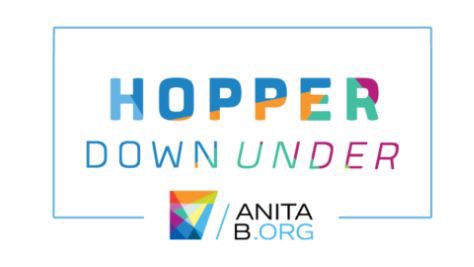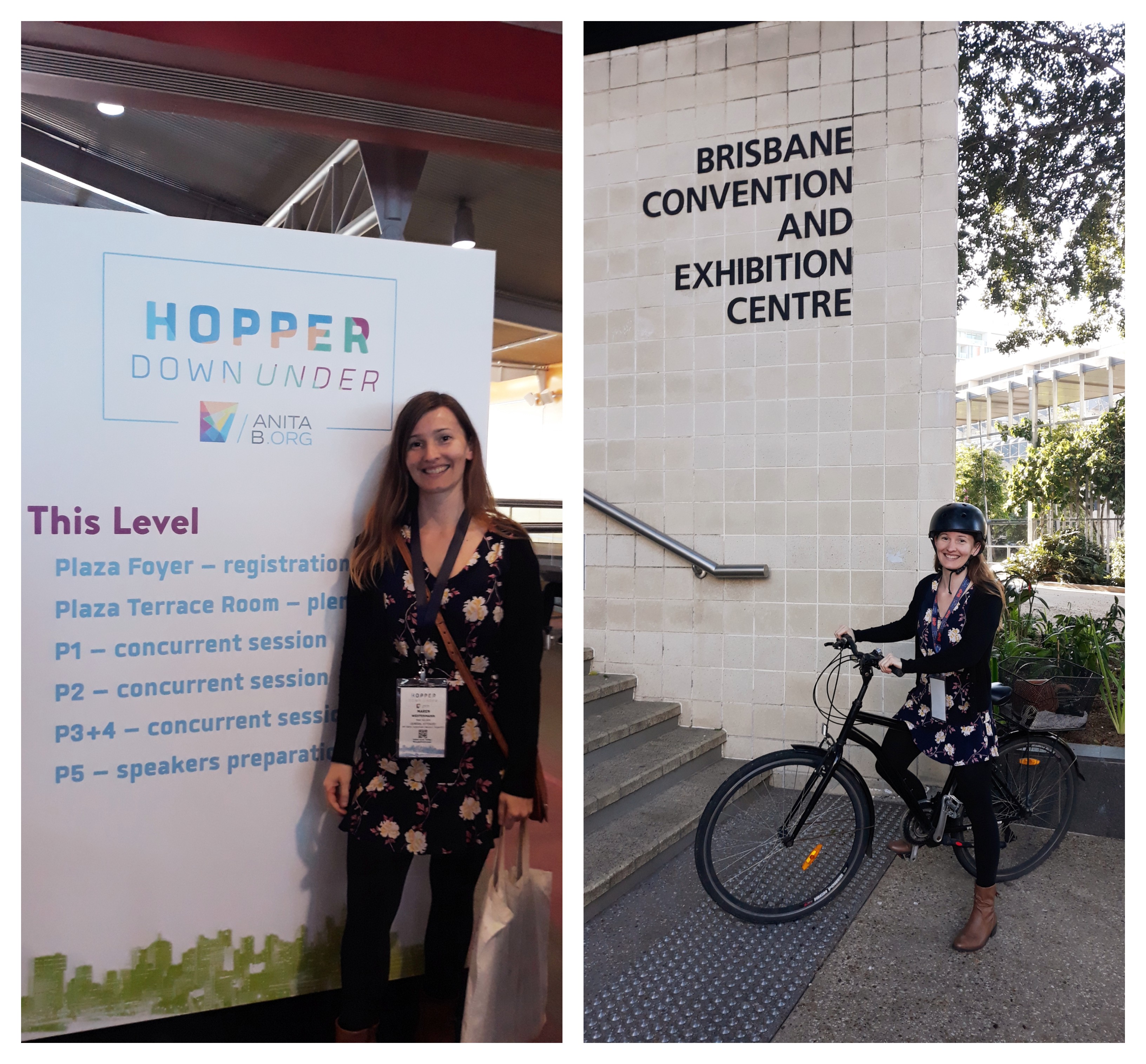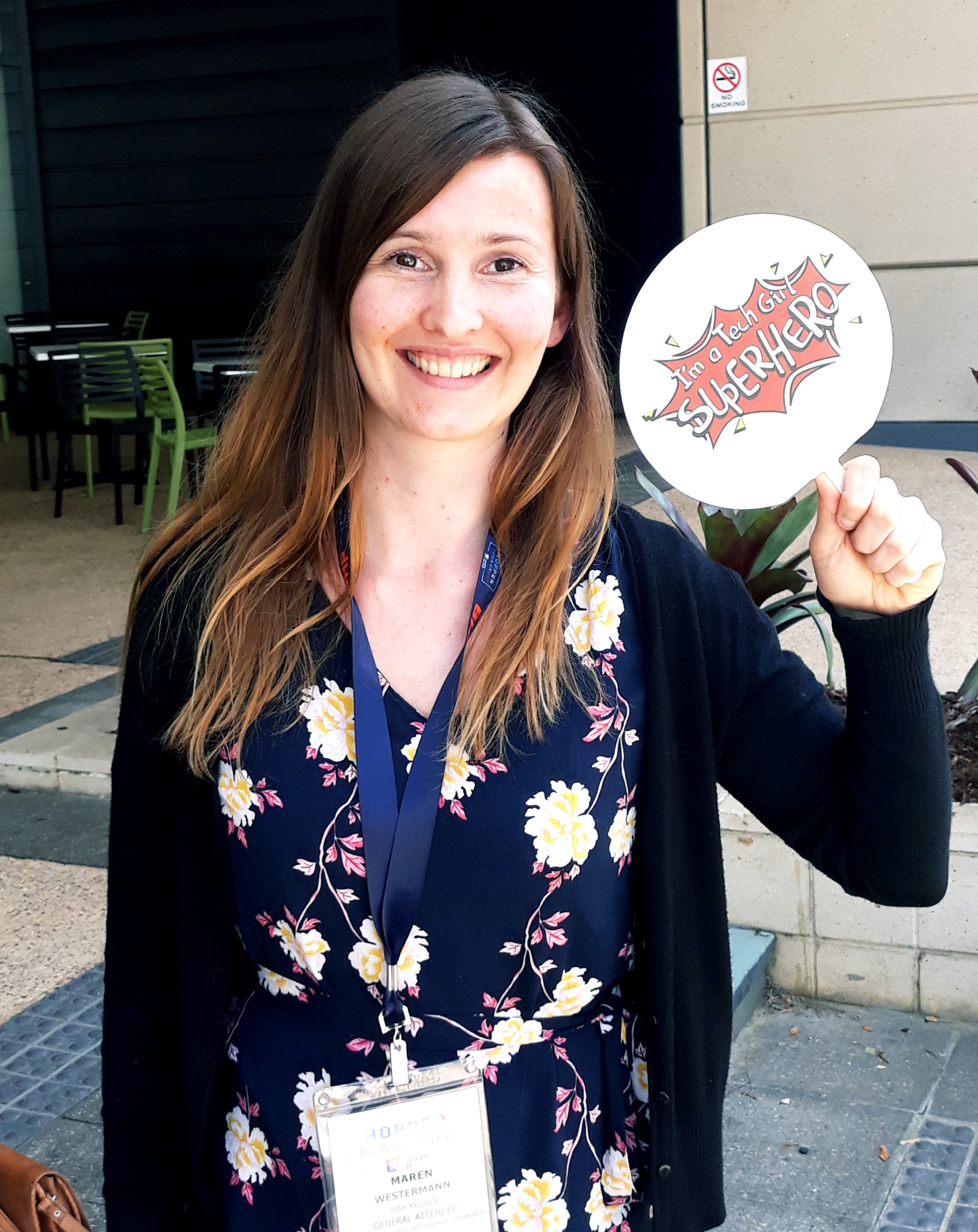Reflections on Hopper Down Under Conference 2019
Impressions, personal highlights and lessons learned from the largest conference for women in IT in the Asia-Pacific region

Introduction
From July 29–31, AnitaB.org, a global nonprofit organisation that aims to support women in technology, held the Hopper Down Under Conference in Brisbane, Australia.
Hopper Down Under, (named in recognition of Grace Hopper, a highly accomplished female pioneer in computer science), aimed to highlight women’s achievements in STEM and to celebrate and promote diversity and inclusion in technology.
As a member of the global nonprofit organisation Women Who Code, I was eligible to apply for a free ticket to this conference and I couldn’t believe my luck when my application was approved. I was also very lucky in the sense that the conference was only a 5 minute bike ride away from my house so I could get there in an environmentally friendly way!

The conference was attended by about 700 people, with the majority of attendees being women. Attendees were mainly based in the Asia-Pacific region, but also from further afield including the US, Canada and the UK, spanning career stages from 1st year undergraduate level to senior level. The topics of the conference were diverse and included technology, research, career and leadership, product and education.
Personal Highlights
The conference was packed with great presentations, panel discussions, workshops and keynote speakers, so it’s challenging for me to pick personal highlights. Outlined below are the three sessions that left the biggest impression on me.
The first one was the keynote speech by Professor Sue Black, a British computer scientist and social entrepreneur. After a short introduction, she began by speaking about the struggles in her early life that included domestic violence, financial problems and having been a young single mother.

What followed was a fascinating story of how she turned her life around by first earning a Bachelor’s degree in computing, and subsequently a PhD in software engineering, and finally becoming a professor of Computer Science at Durham University. She also talked about the campaigns she ran including saving Bletchley Park and “Techmums”, a project that teaches mothers computer skills.
Her life story is an amazing example of what you can achieve with courage and determination, and shows that you can overcome life’s challenges by reaching out and surrounding yourself with supportive people.
My second highlight was the talk by Celeste Carnegie, a Birri Gubba woman from Far North Queensland, who spoke about the challenges faced by indigenous people and women in particular in today’s technology driven world, and how to overcome these challenges.
She talked about how modern technology is not accessible to all schools in indigenous communities and that if it is available, it is not always presented in ways that indigenous children can connect with. In this context she highlighted the importance of listening and, based on this, understanding indigenous people and their culture. She pointed out that you need to “engage before you engage” because you can’t expect people to open up to you if you don’t open up first.
She further spoke about how indigenous people have built tools for tens of thousands of years and how they can build on this history by learning about and using the new technologies that are available today.
Celeste works with indigenous communities to create and foster the connection between technology and culture, which I find an inspiring story of how to close the socioeconomic gap between indigenous and non-indigenous people in Australia.
My third highlight was the workshop “Hour of Power” by Louise Pascale and Liza-Jayne Loch from Outspoken Women. It was a career development workshop that centred around building self-confidence. The topics covered in this workshop included how to be a good speaker, how to build confidence in various situations from meetings to conferences, how to be heard, and how to warm up your voice before giving presentations.
I particularly liked the interactive style of the workshop and I would like to do more of this kind of training in the future.
Positives and Negatives
Overall, the conference was very well organised and the atmosphere was warm, welcoming and inclusive. I enjoyed the diversity of topics and the different session styles, which included presentations, panel discussions and hands-on workshops.
Throughout the conference, multiple sessions were held simultaneously in different rooms. On the positive side, this meant that attendees could choose the session they were most interested in. On the negative side, it meant that it wasn’t always possible to attend all sessions of interest. However, if sessions weren’t run in parallel, the conference would have stretched over a full week. Running sessions simultaneously was a good way of covering a wide variety of topics in just over two days.
For me a very positive aspect of the conference was that I connected with many women from all career levels. This enabled me to build a great professional network from which I will definitely benefit in the future, and it facilitated being able to receive mentoring from senior women as well as providing mentoring to younger women.
One negative aspect in my opinion was that very few men attended the conference, and almost no men in positions of power such as senior academics, politicians and CEOs were present. We as women need to communicate more clearly to men, especially influential men, that we need them at events that address women’s problems in the workplace.
Only when we work together with men and when our messages are heard by them, can we make a change. I hope that in the future we can attract more men in leadership positions to attend events like Hopper Down Under.
Lessons I Learned
Here are my main takeaways from the Hopper Down Under conference:
- The importance of networking — Networking provides many advantages such as positioning yourself in the industry, career development opportunities and boosting your self-esteem. In the beginning it can be scary but once you get the hang of it, it is actually pretty easy. If you don’t know what to do or what to say, just copy the strategies of the people you like.
- Being in the majority is easy — I learned that it is a lot easier to feel comfortable and to be heard and understood when your demographic is in the majority. This is why it is so important to listen to and respect everyone and to focus on inclusion.
- Women have a double workload — Many women in STEM not only do their job, they also work hard for recognition, acceptance, respect and making workplaces more inclusive and women-friendly.
- The power of social media — I’m not much of a social media person and I don’t like putting myself into the spotlight. During the conference I learned to understand the power of social media, and that putting myself forward on these platforms as a representative of women in STEM is not about me, but about engaging more girls and women in STEM and creating change in this way.
- The importance of being proactive — If you want change to happen, you can’t wait for others to do it for you. You need to be proactive.
- Resilience — If we want to get more girls and women to pursue a career in STEM, we as women need to be resilient. We need to make sure that we take care of ourselves first and surround ourselves with supportive people so we don’t burn out or drop out of STEM ourselves.

Summary
The Hopper Down Under conference was a great opportunity for personal and professional growth. The objectives of the conference — building community, strengthening diverse voices, promoting inclusion and inspiring action — were definitely achieved.
It was amazing to see women in STEM from all over the world working together to create such an amazing event. I will continue the good work by connecting with and promoting women in STEM and by being involved in community events in future.